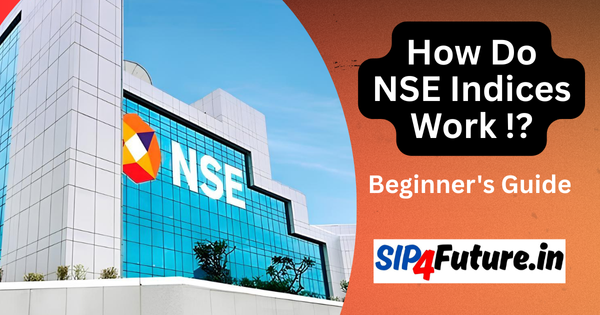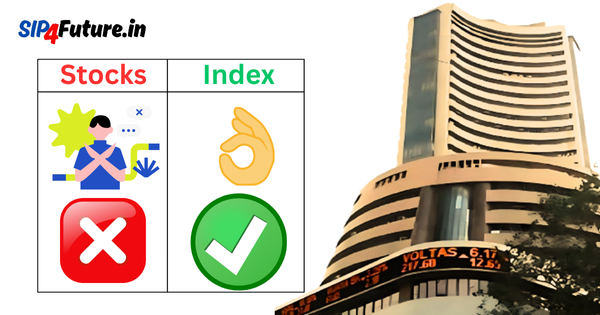The Pahalgam terror attack on April 22, 2025, which claimed 26 lives, mostly Indian tourists, has sent shockwaves through India, escalating tensions with Pakistan and impacting the Indian stock market. The attack, orchestrated by The Resistance Front (TRF), an offshoot of the Pakistan-based Lashkar-e-Taiba, triggered a market correction, with the BSE Sensex and NSE Nifty50 dropping 0.3% and 0.26% on April 24, respectively, and the India VIX surging 8.2% intraday on April 23. This article delves into how the Pahalgam terror attack impacts India’s stock market in 2025, examining affected sectors, government responses, social media sentiment, and sectors poised for recovery, while highlighting implications for Indian security and national security.
Understanding the Pahalgam Terror Attack
On April 22, 2025, terrorists attacked tourists in Baisaran Valley, Pahalgam, Jammu and Kashmir, marking the deadliest civilian attack in the region since 2000. The Jammu and Kashmir Police released sketches of three suspects, two identified as Pakistani nationals, and the National Investigation Agency (NIA) launched a probe. The Indian government responded with severe diplomatic measures, including suspending the Indus Waters Treaty, closing the Attari-Wagah border, and reducing diplomatic ties with Pakistan, raising fears of escalation and impacting national security.
The Indian stock market, regulated by the Securities and Exchange Board of India (SEBI), reacted with volatility. The National Stock Exchange (NSE) and Bombay Stock Exchange (BSE) saw declines, reflecting investor concerns over geopolitical risks, rising oil prices, and a weakening rupee. Below, we explore the multifaceted impact of the attack on India’s financial markets.
How the Pahalgam Terror Attack Affects the Indian Stock Market
The Pahalgam terror attack disrupted the Indian stock market, with the NSE Nifty50 falling below 23,950 and the BSE Sensex dropping approximately 1,000 points on April 25, 2025. The India VIX, a measure of market fear, spiked to 16.52, signaling heightened uncertainty. Analysts, including Prashant Khemka of White Oak Capital, noted that while terror attacks typically have short-term impacts, escalation could prolong volatility.
Market Performance and Triggers
- Market Correction: The BSE Sensex and NSE Nifty50 declined modestly, unlike Pakistan’s KSE-100 index, which crashed 2.12% (2,485.85 points) on April 24, reflecting India’s economic resilience. Source: BSE India
- Geopolitical Risks: India’s diplomatic actions, such as suspending the Indus Waters Treaty, fueled fears of a water crisis, impacting investor confidence.
- External Factors: Rising Brent crude prices (up 1% on April 23) and a weak rupee exacerbated the correction, capping market upside. Source: Moneycontrol
The Indian stock market faced a correction rather than a crash, as defined by Jayadev et al. (a Nifty fall >10% over 20 days or 9% over 5 days). However, social media amplified panic, with terms like “stock market crash” trending on X.
Sectors Most Impacted by the Pahalgam Terror Attack
The Pahalgam terror attack disproportionately affected certain sectors due to its location in Jammu and Kashmir and the diplomatic fallout. Below is a table summarizing the impacted sectors and their challenges.
| Sector | Impact Level | Challenges |
|---|---|---|
| Tourism and Hospitality | High | Mass cancellations, lockdown in Pahalgam, reduced tourist inflow. |
| Agriculture and Agri-Based | Moderate to High | Risks from Indus Waters Treaty suspension, disrupted transport in Kashmir. |
| Transportation and Logistics | Moderate | Attari-Wagah border closure, Pakistan’s airspace restrictions. |
| Trade and Export-Oriented | Low to Moderate | Halting of cross-border trade, impacting Punjab traders. |
| Energy and Power | Moderate | Hydropower project delays, rising oil prices. |
| Banking and Financial | Low to Moderate | Market volatility, regional loan repayment delays. |
1. Tourism and Hospitality
The Pahalgam terror attack devastated Jammu and Kashmir’s tourism sector, which welcomed 3.5 million visitors in 2024. Mass cancellations of hotel bookings and shikara rides, coupled with a 63% drop in Srinagar airfares, signal a collapse in tourist confidence. Stocks like Indian Hotels and EaseMyTrip may face short-term declines. Source: NSE India
2. Agriculture and Agri-Based Industries
The suspension of the Indus Waters Treaty threatens water availability for agriculture in Kashmir, Punjab, and Rajasthan. Kashmir’s apple and saffron industries, worth $120 million annually, face disruptions due to security-related transport issues. Companies like KRBL and Godrej Agrovet may see volatility.
3. Transportation and Logistics
The Attari-Wagah border closure and Pakistan’s airspace restrictions disrupt logistics and aviation. Airlines like IndiGo face higher costs for rerouted flights, while logistics firms in Punjab suffer from reduced activity at the Integrated Check Post. Source: Economic Times
4. Trade and Export-Oriented Industries
India’s minimal trade with Pakistan ($2.81 billion in 2021-22) limits broader impacts, but Punjab traders exporting cement and vegetables face losses. Pharma firms like Cipla may see negligible effects.
5. Energy and Power
Hydropower projects, such as the 850 MW Ratle project, face delays due to treaty uncertainties. Rising oil prices pressure companies like ONGC and Reliance Industries, impacting the Indian stock market.
6. Banking and Financial Services
The NSE and BSE saw volatility, with regional banks like Jammu & Kashmir Bank at risk from loan repayment delays in tourism and agriculture. Large-cap banks like HDFC Bank remain stable.
Government Decisions and Their Market Implications
The Indian government’s response to the Pahalgam terror attack has significant implications for the Indian stock market and national security. Key decisions include:
- Suspension of Indus Waters Treaty: Announced on April 23, 2025, this move threatens water security, impacting agriculture and hydropower. Pakistan’s retaliation, labeling it an “act of war,” heightened market uncertainty. Source: Ministry of External Affairs
- Attari-Wagah Border Closure: Effective April 23, this disrupted trade and logistics, affecting Punjab’s economy and local stocks.
- Diplomatic Staff Reduction: Reducing High Commission staff to 30 by May 1, 2025, signaled a hardline stance, contributing to investor caution.
- Visa Revocation: Pakistani visas were revoked effective April 27, except medical visas until April 29, limiting cross-border movement.
These measures, while bolstering Indian security, fueled short-term volatility in the National Stock Exchange and BSE. However, analysts suggest that unless escalation leads to military conflict, the Indian stock market will stabilize, supported by strong economic fundamentals.
SEBI’s Role in Stabilizing the Indian Stock Market
The Securities and Exchange Board of India (SEBI) played a crucial role during the market correction. SEBI’s actions included:
- Surveillance: Monitoring trading patterns and the India VIX to detect manipulation. Source: SEBI
- Regulatory Measures: Potentially adjusting margin requirements and enforcing circuit breakers to curb volatility.
- Investor Protection: Ensuring timely disclosures and issuing advisories via @SEBI_updates on X to counter panic.
- Coordination: Aligning with the Reserve Bank of India (RBI) to stabilize the rupee and markets.
SEBI’s proactive measures, including stricter F&O regulations from October 2024, helped prevent a deeper decline, ensuring Indian stock market resilience compared to Pakistan’s market crash.
Social Media Sentiment and Its Influence
Social media, particularly X, amplified sentiments about the Pahalgam terror attack and its impact on the Indian stock market. Key themes included:
- Panic and Speculation: Users like @parassoniii speculated about an imminent Indian military response, exaggerating the correction as a “crash.” Posts like “Market in panic bcoz of, Attack on Pakistan at any time” fueled retail investor fear.
- Moral Critique: @FutureEquals criticized the market’s focus on the attack over other tragedies, reflecting national grief but misunderstanding market dynamics.
- Cautious Optimism: Analysts like @Ajay_Bagga predicted short-term volatility but quick recovery, citing historical trends post-terror attacks.
The “All eyes on Pahalgam” trend on X and Instagram amplified public outrage, indirectly sustaining market nervousness. SEBI likely monitored X for misinformation, ensuring Indian stock market stability.
Sectors Poised for Recovery and Growth
Despite the correction, certain sectors are likely to rebound or grow due to the Pahalgam terror attack and government responses:
| Sector | Recovery Potential | Reasons |
|---|---|---|
| Defense and Aerospace | High | Increased defense spending, benefiting companies like Bharat Electronics. |
| IT and Technology | Moderate to High | Minimal exposure to geopolitical risks, strong global demand. |
| Pharmaceuticals | Moderate | Limited trade impact, resilient export markets. |
| Large-Cap Financials | Moderate | Strong fundamentals, insulated from regional disruptions. |
1. Defense and Aerospace
Heightened Indian security concerns will drive defense spending, benefiting companies like Hindustan Aeronautics and Bharat Dynamics. The “Make in India” initiative will prioritize domestic manufacturers, boosting stock performance. Source: Ministry of Defence
2. IT and Technology
The IT sector, including giants like TCS and Infosys, is insulated from regional disruptions, with strong global demand ensuring recovery. The NSE IT index is expected to remain stable.
3. Pharmaceuticals
Pharma firms like Dr. Reddy’s face minimal impact due to limited Pakistan trade, with exports to other markets supporting growth.
4. Large-Cap Financials
Banks like ICICI Bank and HDFC Bank are poised for recovery due to robust fundamentals, despite short-term volatility in the BSE Bankex index.
Long-Term Outlook for the Indian Stock Market
The Pahalgam terror attack has introduced short-term volatility to the Indian stock market, but long-term prospects remain positive. Key factors include:
- Economic Resilience: India’s $1.2 trillion trade volume dwarfs its $2.81 billion trade with Pakistan, limiting broader economic damage. Source: Ministry of Commerce
- Government Support: The RBI’s interventions to stabilize the rupee and SEBI’s regulatory measures will support market recovery.
- International Mediation: Global calls for de-escalation, including from the UN and U.S., reduce the risk of a full-fledged conflict, stabilizing national security concerns.
Analysts predict that unless escalation crosses a critical threshold, the NSE and BSE will rebound within weeks, driven by sectors like defense and IT. Investors should monitor LoC developments and SEBI’s updates for guidance.
Critical Analysis: Balancing Security and Economic Stability
The establishment narrative attributes the attack to Pakistan-backed terrorism, supported by TRF’s claim and suspect identities. Pakistan’s “false flag” claim lacks evidence but fuels distrust. The Indian stock market correction reflects rational investor caution, but social media’s panic-driven narrative risks amplifying volatility. Indian security measures, while necessary, must balance economic stability to prevent prolonged market disruptions. SEBI’s surveillance and government coordination are strengths, but over-regulation could dampen liquidity, as criticized on X.
Conclusion
The Pahalgam terror attack significantly impacted India’s stock market in 2025, triggering a correction in the NSE and BSE indices and affecting sectors like tourism, agriculture, and logistics. Government decisions, such as suspending the Indus Waters Treaty, heightened volatility, while SEBI’s regulatory measures ensured stability. Social media amplified fear, but sectors like defense and IT are poised for recovery, supported by strong Indian security and national security policies. The Indian stock market remains resilient, with a positive long-term outlook if escalation is avoided. Investors should stay informed via SEBI and NSE for updates and avoid reacting to unverified social media claims.




